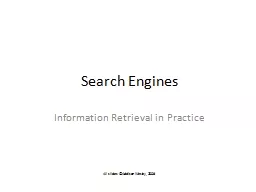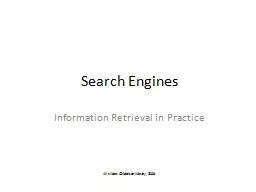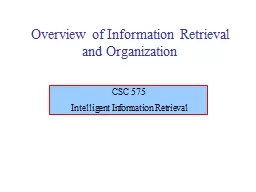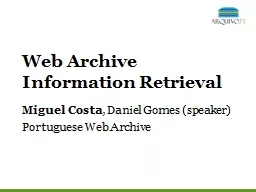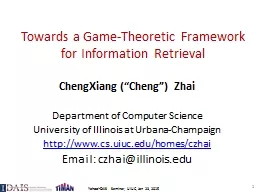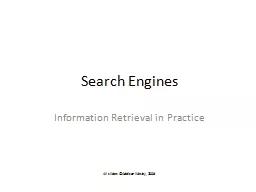PPT-Search Engines Information Retrieval in Practice
Author : conchita-marotz | Published Date : 2018-11-18
All slides Addison Wesley 2008 Evaluation Evaluation is key to building effective and efficient search engines measurement usually carried out in controlled laboratory
Presentation Embed Code
Download Presentation
Download Presentation The PPT/PDF document "Search Engines Information Retrieval in ..." is the property of its rightful owner. Permission is granted to download and print the materials on this website for personal, non-commercial use only, and to display it on your personal computer provided you do not modify the materials and that you retain all copyright notices contained in the materials. By downloading content from our website, you accept the terms of this agreement.
Search Engines Information Retrieval in Practice: Transcript
Download Rules Of Document
"Search Engines Information Retrieval in Practice"The content belongs to its owner. You may download and print it for personal use, without modification, and keep all copyright notices. By downloading, you agree to these terms.
Related Documents

